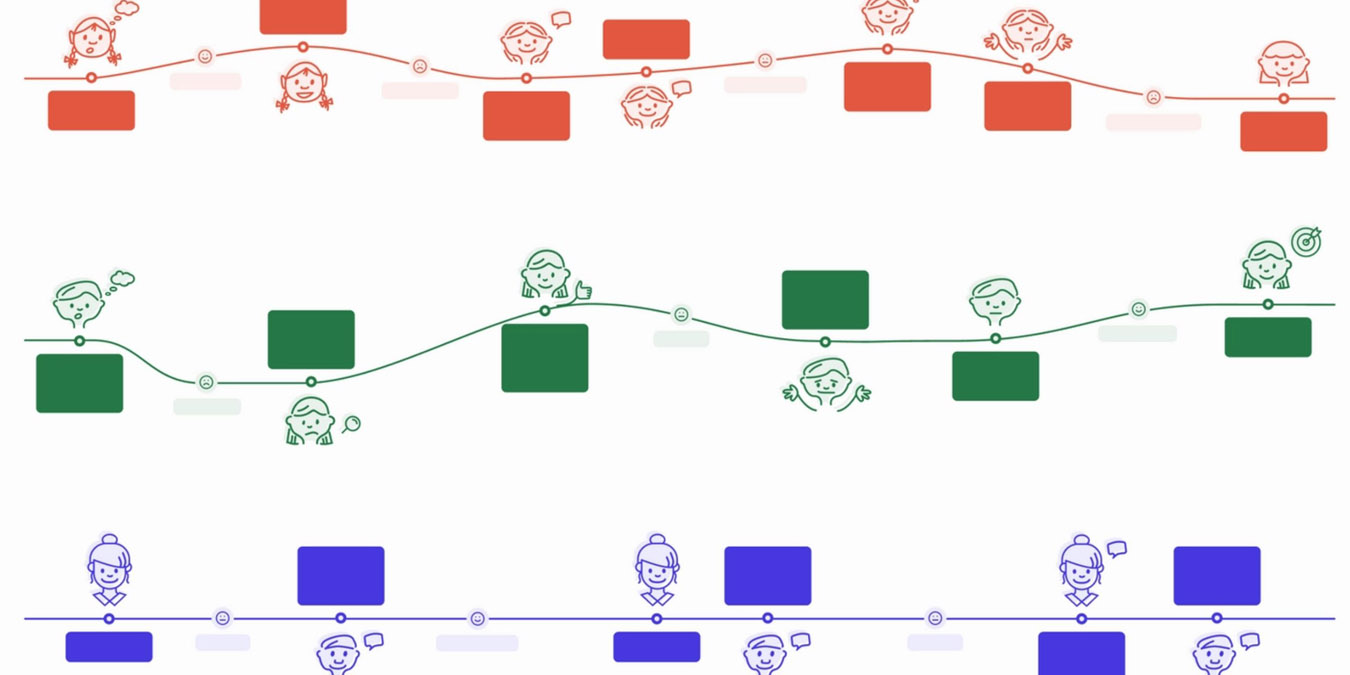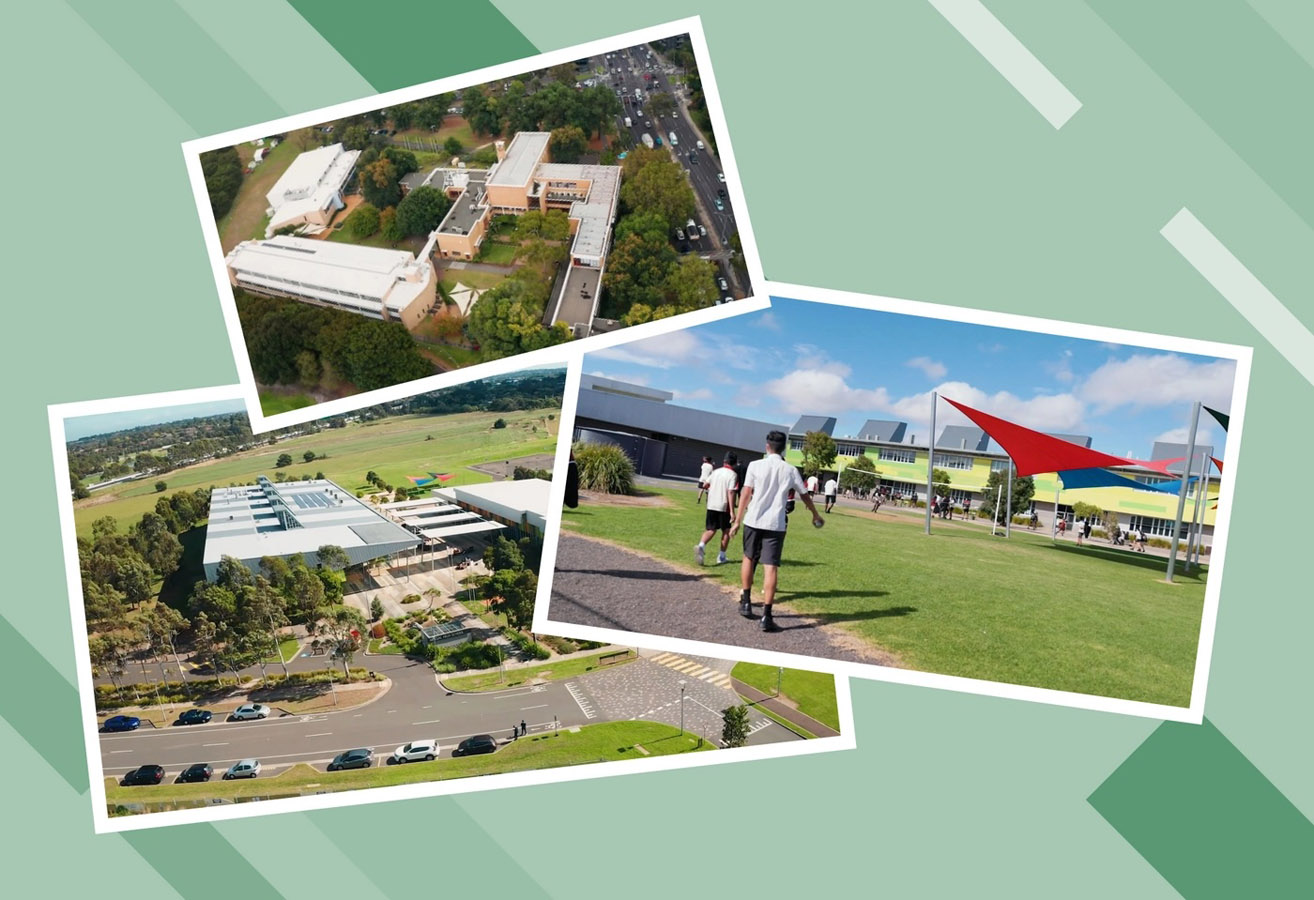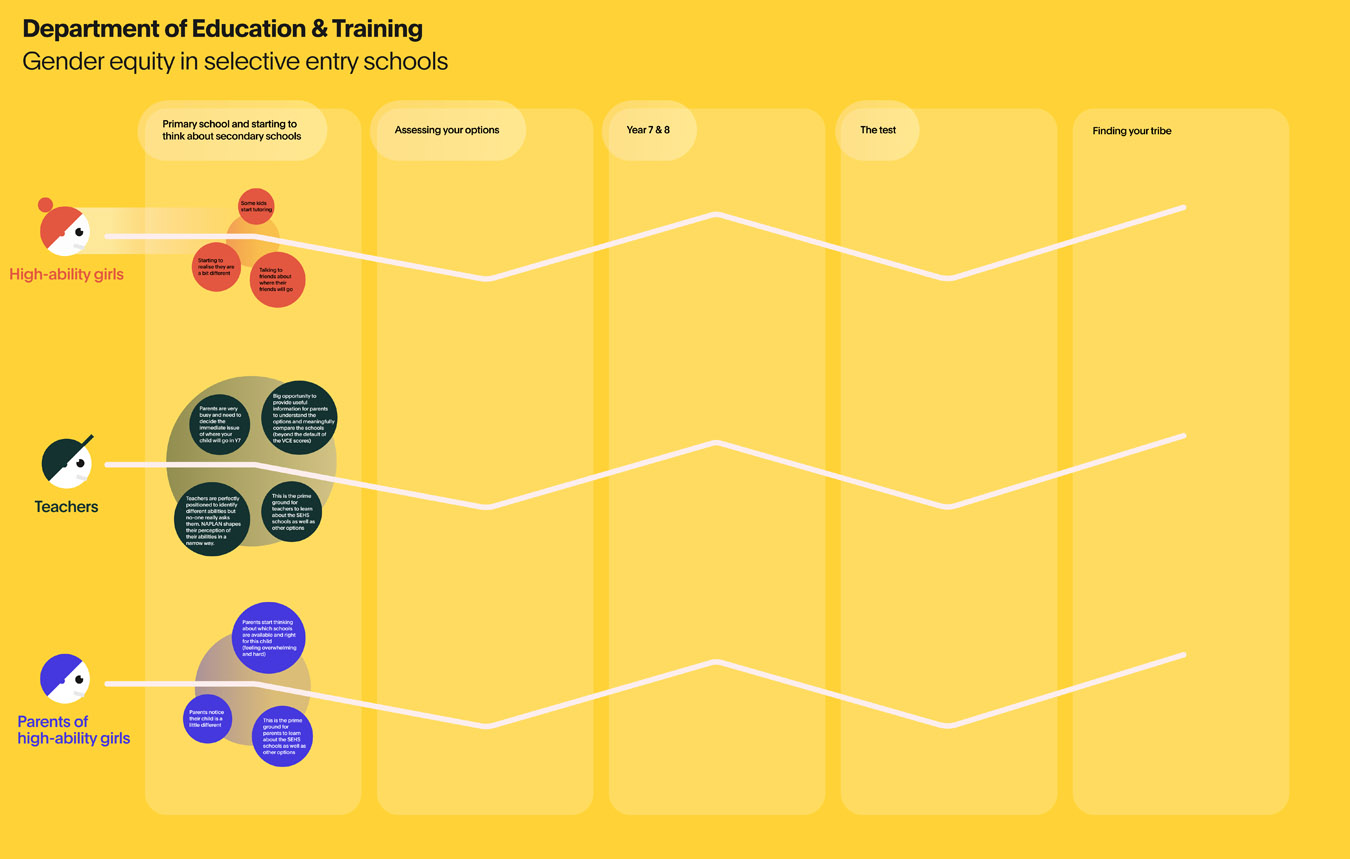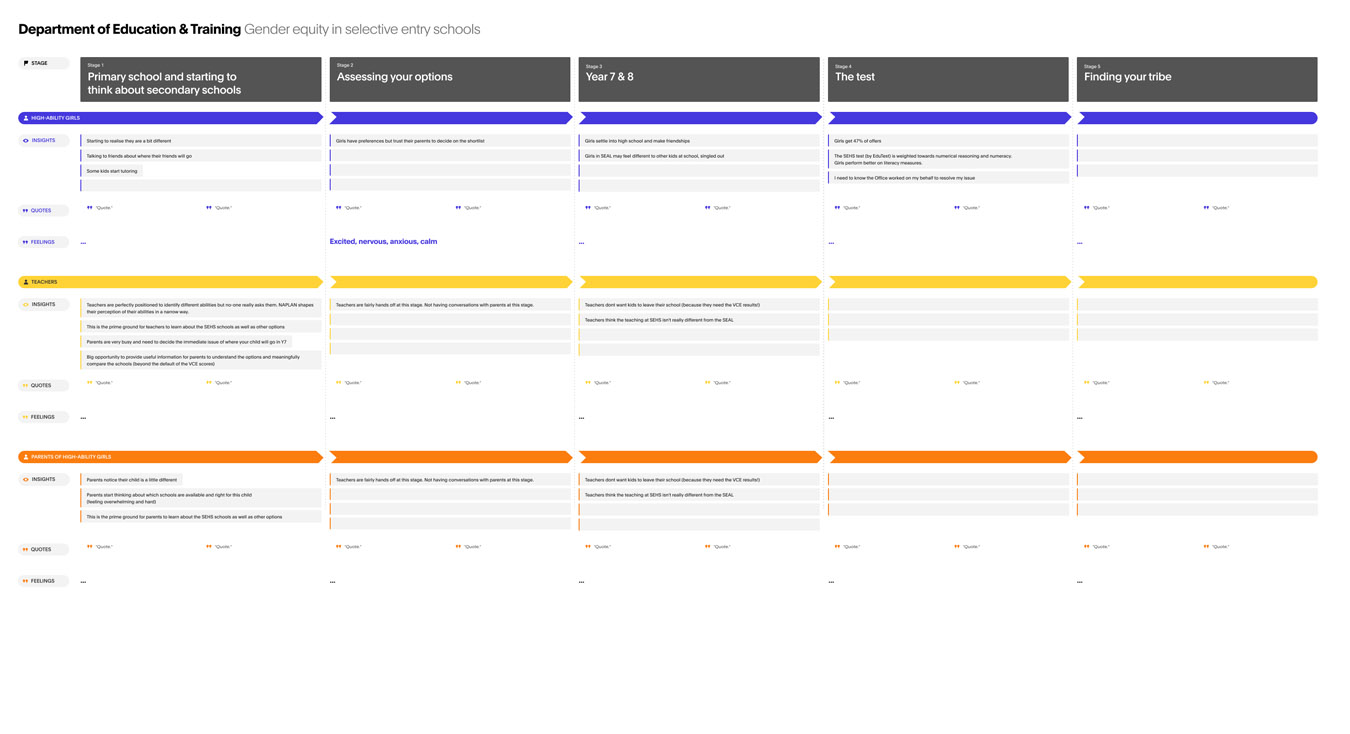Our approach was built around the principle that the people we speak to are active and self-reflective participants in the research, and confident interpreters of their own lives. By focusing upon the experiences of high-ability girls and their families, our project approach was grounded in one of the key aims of contemporary feminism – to give voice to the most marginalised within a given situation.
Our approach was also informed by and compliant with our RISEC (Research in Schools and Early Childhood) – the RISEC was an ethics approval which shaped specific considerations that formed the backbone of our approach.
We needed to ensure that our design activities could reach a large number of individuals from our 4 key stakeholder groups while giving us rich insights to provide the Department and other key project stakeholders with clear guidance and recommendations to help improve gender equity in selective entry high schools. As part of our co-design approach, we included a Year 9 high-ability student in our design team, to ensure that our design activities were appropriate, correctly pitched and directly embedded the voice of high-ability girls.
To complement our lived experience research and co-design, we brought 2 specialist academics onboard – Dr Emily Gray, Senior Lecturer in Education Studies at RMIT and Associate Professor Jacqueline Ullman, Associate Professor in Adolescent Development, Behaviour and Wellbeing at Western Sydney University – to support us in conducting and compiling the research.




